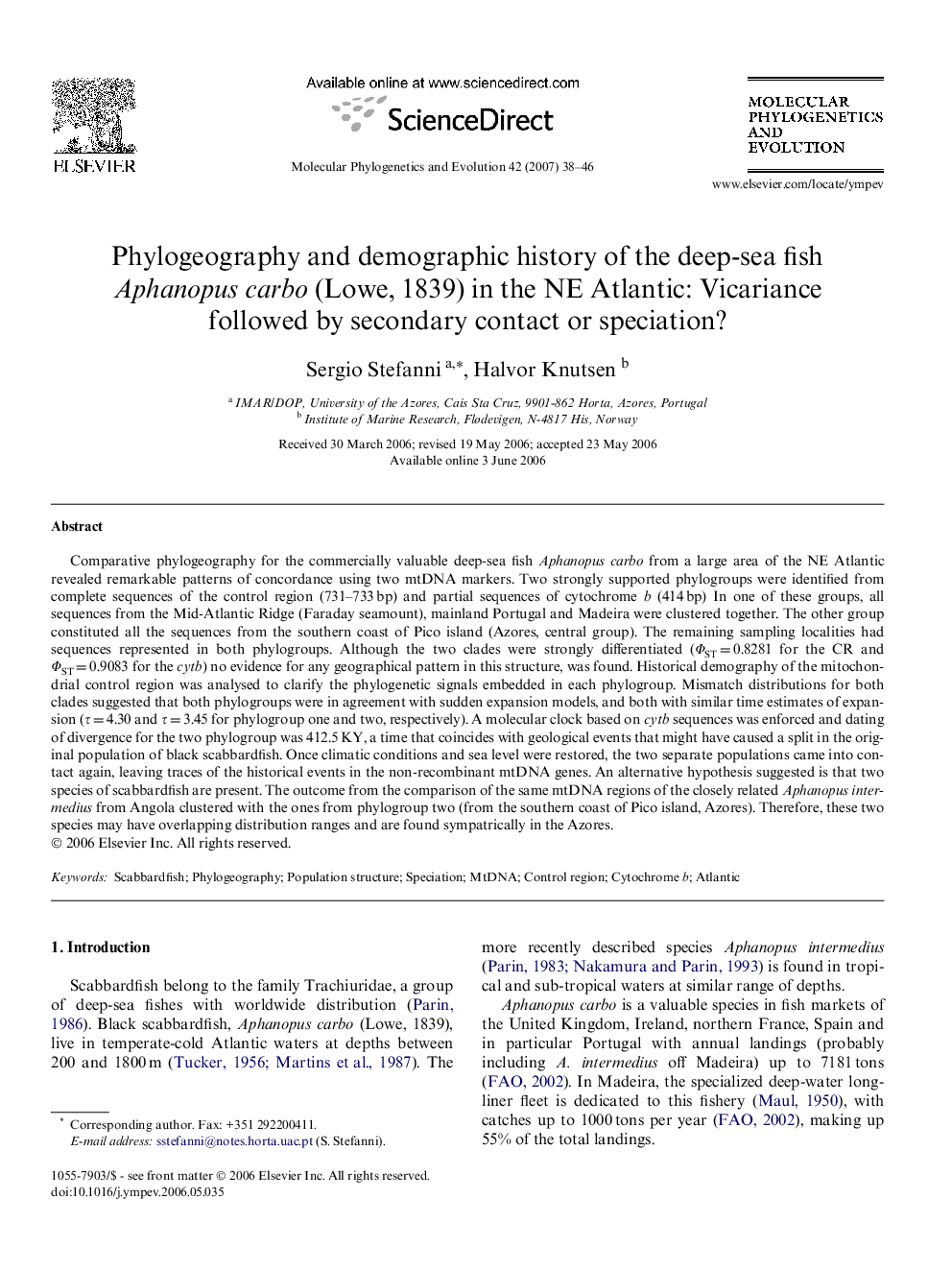| کد مقاله | کد نشریه | سال انتشار | مقاله انگلیسی | نسخه تمام متن |
|---|---|---|---|---|
| 2835671 | 1164350 | 2007 | 9 صفحه PDF | دانلود رایگان |

Comparative phylogeography for the commercially valuable deep-sea fish Aphanopus carbo from a large area of the NE Atlantic revealed remarkable patterns of concordance using two mtDNA markers. Two strongly supported phylogroups were identified from complete sequences of the control region (731–733 bp) and partial sequences of cytochrome b (414 bp) In one of these groups, all sequences from the Mid-Atlantic Ridge (Faraday seamount), mainland Portugal and Madeira were clustered together. The other group constituted all the sequences from the southern coast of Pico island (Azores, central group). The remaining sampling localities had sequences represented in both phylogroups. Although the two clades were strongly differentiated (ΦST = 0.8281 for the CR and ΦST = 0.9083 for the cytb) no evidence for any geographical pattern in this structure, was found. Historical demography of the mitochondrial control region was analysed to clarify the phylogenetic signals embedded in each phylogroup. Mismatch distributions for both clades suggested that both phylogroups were in agreement with sudden expansion models, and both with similar time estimates of expansion (τ = 4.30 and τ = 3.45 for phylogroup one and two, respectively). A molecular clock based on cytb sequences was enforced and dating of divergence for the two phylogroup was 412.5 KY, a time that coincides with geological events that might have caused a split in the original population of black scabbardfish. Once climatic conditions and sea level were restored, the two separate populations came into contact again, leaving traces of the historical events in the non-recombinant mtDNA genes. An alternative hypothesis suggested is that two species of scabbardfish are present. The outcome from the comparison of the same mtDNA regions of the closely related Aphanopus intermedius from Angola clustered with the ones from phylogroup two (from the southern coast of Pico island, Azores). Therefore, these two species may have overlapping distribution ranges and are found sympatrically in the Azores.
Journal: Molecular Phylogenetics and Evolution - Volume 42, Issue 1, January 2007, Pages 38–46